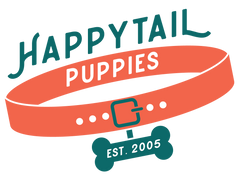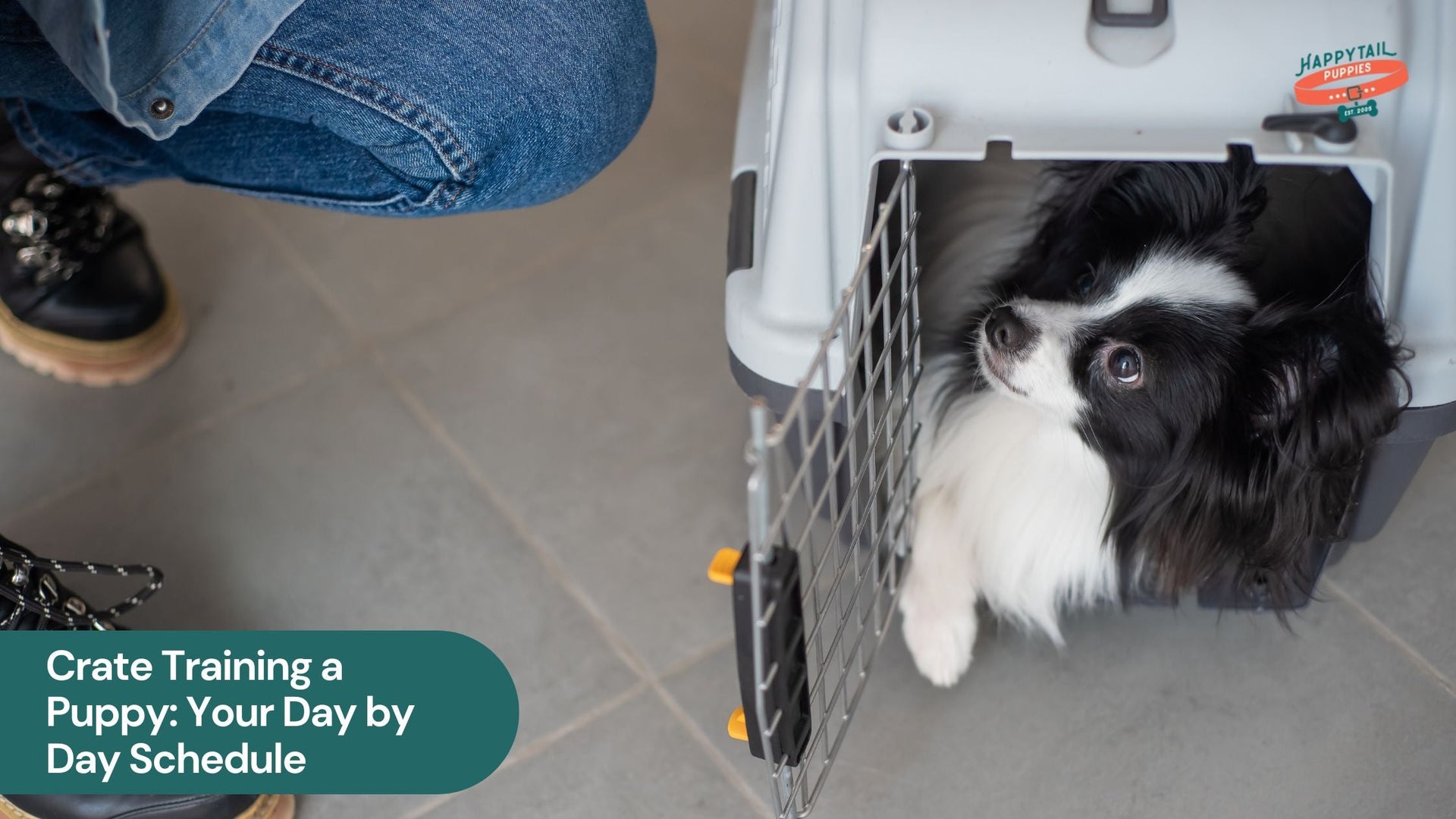Crate Training a Puppy: Your Day-by-Day Schedule for a Happy, Confident, and Crate-Loving Pup
Crate training provides a secure den for puppies, fostering independence and good behavior. Learn a step-by-step schedule from introduction to long-term success.
Taking ownership of a puppy will bring excitement and responsibility. Making it clear on the first day and beyond makes your new friend feel secure and encouraged. A crate is a secluded space that resembles a den, said to be one of the most comfortable places where pups can be curious or anxious. It can be an instrument for relaxation, deterring destructive behavior, and maintaining orderly routines as the puppy comes to terms with house rules when given an appropriate introduction. Making the crate look like their own hideaway is the pathway to success. Slowly and steadily, you will teach them to feel comfortable and at ease in their crate, building a solid and stable groundwork for crate training a puppy.
The Importance of Puppy Crate Training Schedule
The advantage of a crate training schedule is far beyond confinement; it appeals to a dog's innate denning instincts. Puppies have genetically evolved to not soil in the bed where they rest, making a crate an effective ally in house training. Fine experiences in this warm setting bring emotional safety as well as behavioral control.
Research in science suggests that using a crate as a behavioral management device is effective. Recent studies in canine behavioral science have confirmed its effectiveness in reducing anxiety and enhancing owner satisfaction. Crate training, when conducted in a patient and reassuring manner, is an effective way to shape reliable behaviors.
The training in the crate also prepares hypotheses on real-life situations. Traveling with your dog without getting nervous, visiting the vet, or dealing with an emergency is easier to do once your puppy is already comfortable in their crate. This training then reaps dividends of ease and dependability in their lifetimes.
Different Stages to Lay A Strong Success
The structure provides a sense of security among young puppies in a new environment. Taking steps from day to day will help avoid overwhelming your dog and allow them to gain an understanding that there is some semblance of a schedule. Each step will enable your puppy to become acquainted with it comfortably and associate it with a positive experience.
Selecting the Right Crate and an Optimal Place
The travel process begins by selecting an appropriate crate, depending on the size and age of your puppy. A crate that fits well provides adequate room to stand, turn, and lie down on without attracting urination in a corner. Adjustable dividers allow “growing” in the first months. The space is inviting, with soft bedding and secure chew toys, as well as materials that are hardy enough to withstand the teething stages.
When buying a professionally trained puppy, it's essential to know that placing the crate in a location where family members spend most of their time helps keep your puppy occupied throughout the day. Placing it in your bedroom at night makes it comfortable, and it helps keep your puppy calm, allowing him to settle sooner. The American Society for the Prevention of Cruelty to Animals (ASPCA) held that the size and location of crates significantly determined the effectiveness of training. They also include recommendations to use the crates in conjunction with positive reinforcement so that stress or fear is not involved.
The American Veterinary Medical Association (AVMA) agrees as they strive to emphasize the role airflow and safe materials play in keeping your puppy physically healthy. This will be a safer and more enjoyable experience for both the owner and the puppy by adhering to their professional guidance.
Days 1–3: Building Positive Associations and Comfort
The first three days are dedicated to introducing your puppy to a safe and friendly environment in the crate. Put the crate in a familiar part of your home where the door remains open, allowing your puppy to move inside and around the crate. Having a few goodies and favorite toys inside will motivate a child's curiosity without any form of pressure. At this point, do not push your puppy into the crate, as the aim is to build trust and minimize hesitation.
Setting the meals close to the crate or right inside starts to create a positive relationship. When your puppy goes in willingly, give it calm praise and use a light tone to confirm its choice. You may attempt this during the evening by shutting the door for a few minutes and staying around. Increase that duration bit by bit, and as the dog gets used to the wait, reward it with a tiny treat on leaving. Nighttime crate use should begin immediately. Having the crate in your bedroom will ensure that it can hear and smell you. When responding to whining, it is essential to wait until there is silence before opening the door so the puppy understands that crying does not result in immediate attention.
Days 4–7: Introducing Routine and Independence
At this age, your puppy begins to receive systematic crating. Now it is time to introduce longer sessions in the crate, starting at about fifteen minutes and remaining in the room, then using short absences as you leave the room to teach your pup to accept alone time indifferently. To avoid any mild anxiety, give a food-stuffed toy, such as a Kong, during these sessions to establish positive distractions.
The crate should still be used during mealtimes so that it becomes associated with the activity. During the nighttime process, move the crate a little further away so that there is some light encouragement toward independence. Listen to your puppies, and whining can be a result of a need to go potty, not anxiety. When you take your puppy outside, do so calmly and return them to the crate immediately. Comfort and encouragement along these steps make them trustworthy and prepare them for the following crate use.
Creating Short-Structured Sessions
A slow, progressive increase in crate time creates predictability and independence. Begin by confining your puppy in five-minute intervals until it reaches fifteen-minute intervals. The food-stuffed toy is another way of keeping them occupied as you move out of sight momentarily, creating an antidote to separation anxiety.
The adjustment can be facilitated by the interactive mastering time between the crate sessions. Puppies need to expend their energy; games like tug or teaching your dog to fetch can help release it and also keep your puppy mentally stimulated. A consistently calm training after play in the crate makes the crate a welcome reward place. For smaller breeds, striking a balance between activity and relaxation is crucial.
Week 2: Building Confidence with Longer Crate Sessions
When your puppy gets used to trips in the crate, you can start prolonging the time spent in the crate to build up endurance. Arrange a half-hour to an hour of crate time during the day when you are performing your chores or working around the house. Even at these longer intervals, puzzle toys or safe chews remain effective engagement tools, especially for small dog breeds like the Cavalier King Charles Spaniel. Learn to self-soothe by rewarding quiet and calm behavior with verbal praise when you are back.
The use of crates at night is maintained, and you can move them to a hall or other quiet room, provided your puppy is also relaxed. If signs of stress are displayed, temporarily return the crate to its original placement, as near as possible, to your sleeping quarters. This method of encouraging confidence in a young puppy is recommended by professional organizations, such as the AVMA, due to the gentle nature of these care routines. The continuity of Week 2 establishes a crucial foundation for a future independent life.
Weeks 3–4: Establishing Routine and Ownership of the Crate
Your puppy should be at the stage of willingly going into the crate during naps or quiet hours at this point. As much as possible, introduce random crate sessions throughout the day, even when you are home so that your puppy does not come to associate the crate only with you being away. Abandoning a comforting blanket or a pair of familiar old t-shirts on the inside supports the idea of safety and family life.
At this point, your puppy is capable of spending up to two hours in the crate at a time during waking hours, but you must take it outside to relieve its bladder frequently. Stay positive with the reinforcements and switch to verbal praise once entering and settling becomes a common occurrence. As the puppy exits the crate, calm exits should be encouraged to avoid overexcitement and help it become composed. This aspect of structure and composure makes your puppy more confident about the crate, where it can feel at home and find comfort.
Preparing for Travel and Vet Visits
Introducing them to travel crates at an early age will make future travel with the puppy less stressful. By practicing at home in small sessions with your puppy, he will learn to associate pleasant experiences with his travel crate. Gradual acclimation to an immobile crate plays a crucial role in mitigating the adverse effects of transport or any other new environment, as the period spent in a stationary crate must be gradually accumulated, allowing for the establishment of tolerance. Minimizing the transition period by keeping some simple dog travel tips in perspective, such as ensuring that dogs are well-ventilated and introduced to the sound of a moving car, might also be helpful.
Crating training is an option recommended by many veterinarians to help alleviate the fear of a veterinary visit. A calm puppy that is confined sufficiently will not become stressed in the examination zone and waiting rooms. Bringing along any bedding or toys your puppy is accustomed to will provide more security and help its brain associate the crate with a safe home, regardless of the weather.
Adapting Crate Training for Adult Dogs
The benefits of crate training are much more than those of a puppy. Emotional stability is also a source of comfort for adult dogs, as it provides them with their own safe space. Seeing the crate now and then, sending emails about the good habits, not panicking when it comes to transition, moving, or a surprise visit.
For an older dog that has not been accustomed to a crate, it is advisable to start with a gentle introduction to the crate, introducing it from a position that is familiar to the dog. Trust is also built through patience and consistency. Any age dog will have a pleasurable experience in their cage, as a positive choice area, rather than when in an enclosed space, and will become comfortable accepting a cage as an automatic option as they grow older.
Maintaining Progress: Long-Term Crate Success
Successful follow-up with the crate after the original training period maintains this tool as positive and functional. Keeping your puppy in a crate at times should be part of their life, but using it at different times can help avoid predictability. Never put your puppy in a crate as a form of punishment, as it will repel all the positive associations. Instead, use it as a place of rest to take naps, eat, or have some quiet time, and affirm that it causes comfort.
Major life changes, such as relocating to a new home, bringing in new family members, or traveling, may necessitate updating previous progress. Reverting to shorter crate periods in the short term helps your puppy and prevents backsliding. Being accommodating and flexible will help your dog thrive and be happy in the long term.
Conclusion
Crate training will create a safe space where your dog can feel comfortable and learn to become more independent. This should be done through a gradual process that leads your pup to advance at its own pace, developing trust and confidence. Whether these are the initial days of exploring it or weeks later when one is sure of its uses, the approach turns the crate into a loved sanctuary. Consistency, patience, and positivity are the keys to success. Your puppy will quickly get accustomed to the crate as their favorite secluded nest with your help and diligence.


